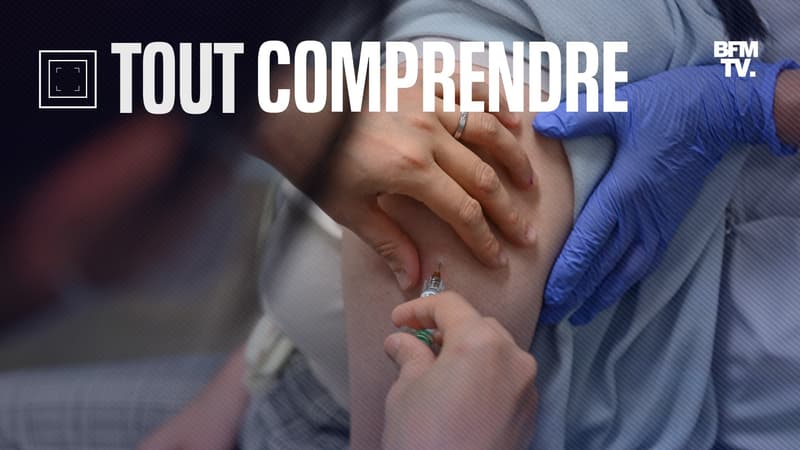A few months after making public his fight against a tumor linked to the human papilloma virus (HPV), Arthur Sadoun, head of the global communication group Publicis, launched an appeal on Tuesday to large companies to “break the cancer taboo in the job”. and he remembers the importance of vaccination. “Do you know that 80% of adults have the papillomavirus?” he asked in a video posted in December by Publicis.
“Talking about it is the only way to make people understand the importance of the vaccine that could save so many lives”, declares in this same clip the actor Michael Douglas, who had fought against throat cancer caused by the same virus.
· What is the human papilloma virus?
When talking about papillomavirus, the term HPV is used. Means “human papillomavirus” in English, or human papilloma virus. HPVs are “a family of common viruses that are transmitted very easily, almost exclusively by sexual contact (with or without penetration),” explains the Health Insurance website. It is also “the most common sexually transmitted infection (STI).
“It is a banal and extremely frequent infection, it is 80 to 90% of the population, men and women, who will be in contact with this human papillomavirus” during their lives, Julia Maruani, a gynecologist, indicates on BFMTV.
“Most of the time the infection is transient and disappears on its own, but between 5 and 10% persist and can cause lesions in different parts of the body,” the doctor specifies.
· What types of cancer can it cause?
And it is these lesions that can cause cancer in the infected person, sometimes years after being contaminated. This virus is best known for causing cervical cancer, a disease caused 100% by the papilloma virus. About 3,000 new cases of cervical cancer are identified each year and about 1,000 women die from it.
But HPVs can also cause cancers of the vulva and vagina.
This virus can also cause “cancers of the anus, whether in men or women, ENT cancers that are mainly in men, and also cancers of the penis, but which are still less frequent,” says Julia Maruani.
According to data from the League Against Cancer, “approximately 6,300 cases of human papillomavirus-related cancers are diagnosed in France in men and women each year, which translates into 2,900 deaths.” Among the cancers caused by HPV, 25% occur in men, underlines the Ministry of Health.
“The main risk factor for cancer of the cervix, cancer of the vagina, vulva, and anus continues to be infection by the human papillomavirus,” explains Julia Maruani. As for ENT cancers, “there is still a coinfection, linked to tobacco and alcohol, but the papilloma virus is responsible for a third of throat cancers.”
· How to detect an infection?
Currently, “the only detectable papillomavirus-related cancer is that of the cervix,” says the gynecologist. In this sense, “for this organ there is an organized screening where women between the ages of 25 and 65 must take samples from the cervix (…) Thanks to this we treat 35,000 precancerous lesions a year, that’s as many cancers avoided.”
For women, “the smear examination must be carried out every 3 years from 25 to 30 years and every 5 years from 30 to 65 years”, explains the Health Insurance.
For other types of cancer, there is no screening, but symptoms can be seen in case disease develops. Regarding the anus, “it can be a feeling of heaviness, discomfort when getting on the chair, bleeding”, explains Julia Maruani, and “at the level of the penis it can be an abnormal lesion, such as redness, a slightly elevated lesion, oozing”.
On the other hand, “for throat cancers it is very complicated because there are no symptoms in an early stage, they are symptoms in an advanced stage.”
· Can we prevent pollution?
There is a vaccine that protects against papillomavirus infection, recommended since 2007 in France for girls. “As of January 1, 2021, the recommendations also apply to all children,” writes the Vaccination Information Service site.
Ages 11-14 are recommended, but catching up is possible up to age 19. It is also recommended “up to the age of 26, for men who have or have had sexual relations with other men,” the platform underlines.
All the specialists endorse the efficacy of this vaccine because when the injection “is done before the start of sexual life, the protection conferred by the vaccine, against the viruses covered by the vaccine, is close to 100%”, indicates the Service of Vaccination Information. Not all HPVs are covered by vaccination, but the Gardasil vaccine still protects “against infections with HPV types 16, 18, 31, 33, 45, 52 and 58, which are implicated in 90% of HPV cancers.” cervix,” writes the Health Insurance.
On the other hand, when the vaccination is carried out after the beginning of the sexual life “the protection is less, because the vaccine does not protect against previous infections by HPV”.
· Are we sufficiently vaccinated in France?
Papillomavirus vaccine coverage is very low in France today, in 2020 “it was estimated at 41% for a dose at 15 years (vs. 35% in 2019) and 33% for the full regimen at age 16 (vs. 28% in 2019)”, writes the League Against Cancer. And “only 6 to 10% of children would be vaccinated. It is a real problem”, adds Julia Maruani.
On the other hand, in Australia, “the vaccination coverage of at least 80% of this population has allowed a reduction of more than 77% of the genotypes responsible for 75% of cervical cancers,” says Salud.
French health authorities target an HPV vaccination coverage among adolescents of 60% by 2023 and 80% by 2030.
Source: BFM TV


